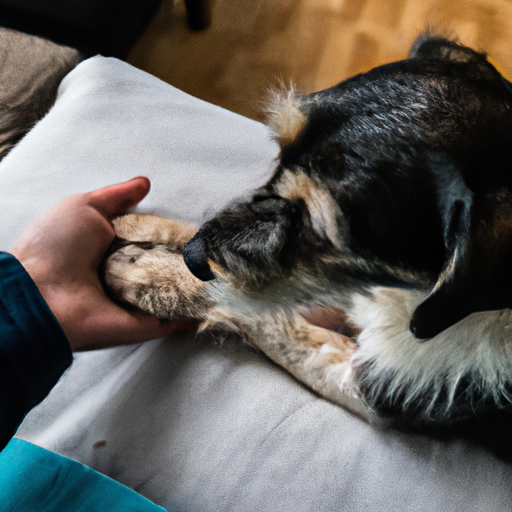From Your Best Friend’s Perspective
As you come home after a long day, feeling a little down, you might find your dog rushing to you with a wagging tail and a comforting presence. Have you ever wondered if they can sense your sadness?
Studies have shown that dogs are astute observers of human behavior and have the ability to pick up on subtle cues that signal our emotional state. They do this in a variety of ways.
- Observation: Dogs observe our body language, tone of voice, and overall demeanor. Changes in these can signal to your dog that you’re feeling sad.
- Smell: Dogs have an incredible sense of smell. They can detect chemical changes in your body that occur when you’re sad, such as an increase in cortisol, a stress hormone.
The Science Behind Their Sixth Sense
Research has shown that dogs are capable of recognizing human emotions. They can even distinguish between different human emotional expressions, such as happy, sad, and angry faces.
One study revealed that dogs tend to act in a specific way when their owners are sad. They may become more submissive, act more affectionate, or even mimic their owner’s emotions. This is a clear indication that dogs are not just responding to their owner’s behavior, but they are also empathetic to their emotional state.
The Comforting Canine Response
When dogs sense that their owners are sad, they usually respond in a comforting way. They might nuzzle you, lay their head in your lap, or stay close to you. This is their way of showing empathy and trying to comfort you. Here are some common comforting behaviors:
- Nuzzling or licking
- Staying close to you
- Bringing you their favorite toy
- Quietly sitting or lying by your side
How To Respond To Your Dog’s Empathy
Your dog’s response to your sadness is a testament to their loyalty and love. It’s important to respond positively to their attempts at comforting you. Avoid pushing them away or punishing them. Instead, you can:
- Acknowledge their comfort: Pet them gently or give them a kind word. This will not only comfort you but also reinforce their positive behavior.
- Reward them: Show your appreciation by giving them a treat or their favorite toy.
| Ways to Respond | Actions |
|---|---|
| Acknowledge | Pet them, speak kindly |
| Reward | Give treats, toys |
Building An Emotional Bond With Your Dog
Understanding your dog’s ability to empathize with your emotions can deepen your bond. You can use this understanding to improve your communication with your dog. Remember, this is a two-way street. Just as your dog empathizes with your feelings, you should also pay attention to their emotional state.
FAQs
Q: Can dogs sense other emotions, like happiness or anger?
A: Yes, dogs can sense a range of human emotions, including happiness and anger.
Q: How can I tell if my dog is feeling sad?
A: Dogs might show sadness by becoming less active, showing less interest in play, or changes in their eating and sleeping patterns.
Q: Can my dog’s behavior change if I’m constantly sad or stressed?
A: Yes, constant sadness or stress can impact your dog’s behavior, making them anxious or depressed.
Remember, your dog is not just a pet, they’re a part of your family. They share your joys, your sadness, and everything in between. Recognizing their emotional sensitivity can help you appreciate the depth of your bond and nurture it further.



